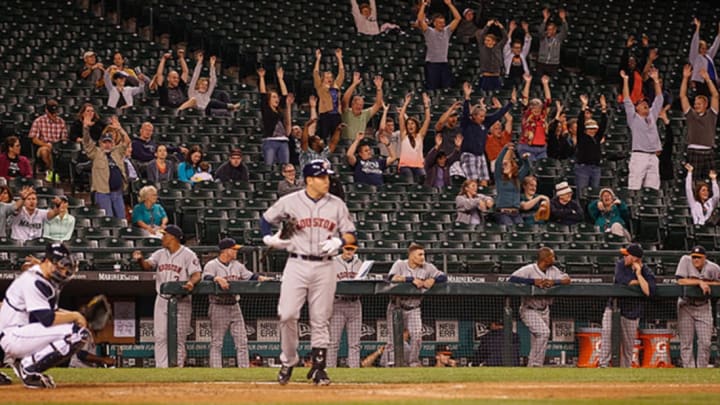The Wave, a favorite of crowds at professional sports arenas, was first recorded at an Oakland baseball game in 1981. It has gone on to delight and disgruntle sports fans at virtually every baseball game since. It's such a widespread phenomenon that it has even become the subject of scientific inquiry, as Vocativ recently reported.
A Hungarian biological physicist named Illes Farkas studied The Wave (also known as the Mexican Wave, since it made a notable appearance at the 1986 World Cup in Mexico City) as part of a study published in a 2002 edition of the prestigious journal Nature. He was primarily interested in the way the social phenomenon mimics how particles behave, and to analyze crowd behavior, his team used models originally created to study cardiac tissue.
Please enjoy this very important analysis of how The Wave usually works, according to Farkas’s study: (Note that meters have been changed to feet.)
"The wave usually rolls in a clockwise direction and typically moves at a speed of about [39 feet] (or 20 seats) per second and has a width of about [19 to 39 feet] (corresponding to an average width of 15 seats). It is generated by no more than a few dozen people standing up simultaneously, and subsequently expands through the entire crowd as it acquires a stable, near-linear shape."
Now you know that if you really want to start The Wave, you’re going to have to convince a few dozen people to do it with you. Science says so.
[h/t Vocativ]
Know of something you think we should cover? Email us at tips@mentalfloss.com.
